When Emperor Phocas donated this pagan temple to Pope
Boniface IV in 608, he unwittingly ensured that one of the marvels of
ancient Rome would be preserved, virtually unaltered, in its new guise
as the Christian church Santa Maria ad Martyres. Emperor Hadrian, an
amateur architect, designed this lovely structure in AD 118–125. It has
been lightly sacked over the ages – barbarians took portable pieces,
Constans II stole its gilded roof tiles and, in 1625, Urban VIII melted
down the portico’s bronze ceiling panels to make cannon for Castel Sant’
Angelo. Yet the airy interior and perfect proportions remain, a wonder
of the world even in its own time.
|
Emperor Augustus’s
son-in-law, Marcus Agrippa, built the first Pantheon in 27 BC, replaced
in AD 118-125 by Hadrian’s rotunda. The pediment’s inscription “M. Agrippa cos tertium fecit”(“M.
Agrippa made this”) was Hadrian’s modest way of honouring Agrippa. The
pediment also provided the illusion of a smaller temple, making the
massive space inside even more of a surprise (the Pantheon was
originally raised and you couldn’t see the dome behind). Bernini’s “ass
ears”, tiny towers he added to the pediment, were removed in 1883.
|
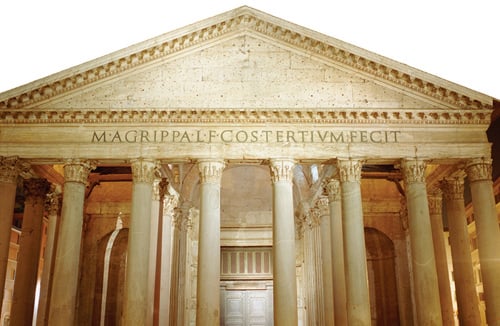
Agrippa inscription, Pantheon façade
|
There’s a good
gelateria, Cremeria Monforte, on the Pantheon’s right flank, and an
excellent coffee shop, La Tazza d’Oro, just off the square .
|
|
|
Rather than bemoan a
rainy day in Rome, scurry to the Pantheon to watch the water fall
gracefully though the oculus and spatter against the marble floor and
down a drain. Snowfalls are even better.
|
|
Top 10 FeaturesDome The
widest masonry dome in Europe is precisely as high as it is wide: 43.3 m
(142 ft). Its airy, coffered space, cleverly shot through with a shaft
of sunlight from the oculus, is what lends the Pantheon an ethereal air.
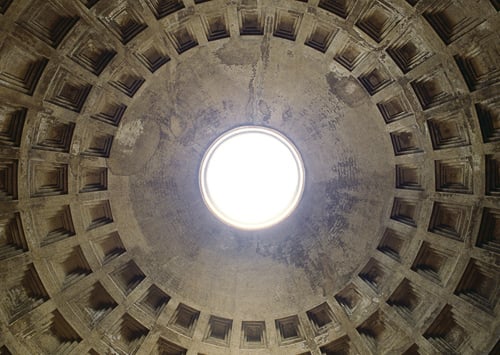
Oculus The
bold, 8.3 m diameter (27-ft) hole at the dome’s centre provides light
and structural support: the tension around its ring helps hold the
weight of the dome.
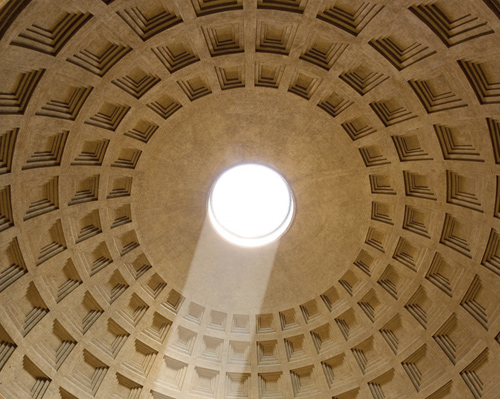
Portico The
triangular pediment is supported by 16 pink and grey granite columns,
all original save the three on the left (17th-century copies).
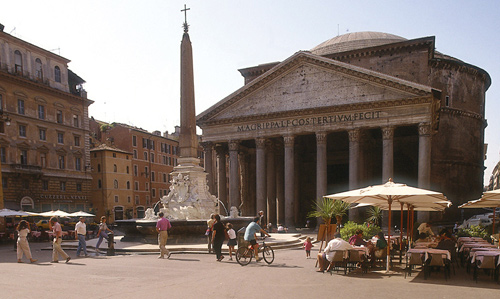
Doors The
massive bronze doors are technically original, but were so extensively
renovated under Pius IV (1653) they have been practically recast. Walls The
6.2-m (20-ft) thick walls incorporate built-in brick arches to help
distribute the weight downwards, relieving the stress of the heavy roof.
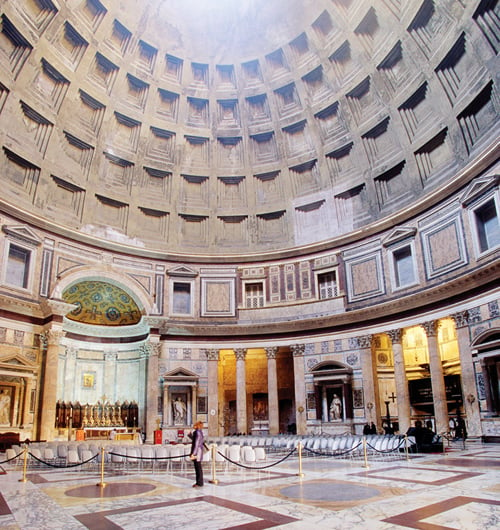
Royal Tombs Two
of Italy’s kings are honoured by simple tombs. Vittorio Emanuele II
(1861–78) unified Italy and became its first king. His son, Umberto I,
was assassinated in 1900. Raphael’s Tomb Raphael,
darling of the Roman Renaissance art world but dead at 37, rests in a
plain, ancient stone sarcophagus. Poet Bembo’s Latin epitaph translates
as: “Here lies Raphael, whom Nature feared would outdo her while alive,
but now that he is gone fears she, too, will die.” Other artists buried
here include Baldassare Peruzzi. Fountain Giacomo
della Porta designed this stoop Leonardo Sormani carved it in 1575. The
Egyptian obelisk of Rameses II was added in 1711.
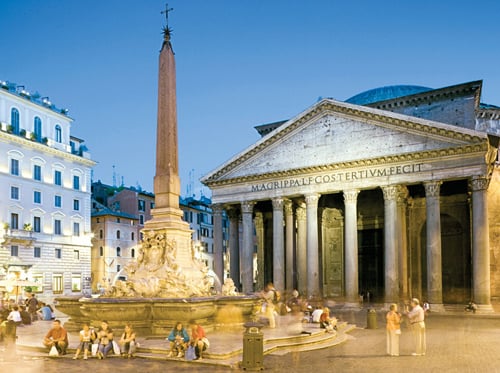
Marble Decorations Red
porphyry, giallo antico, and other ancient marbles grace the interior.
More than half the polychrome panels cladding the walls are original,
the rest careful reproductions, as is the floor.
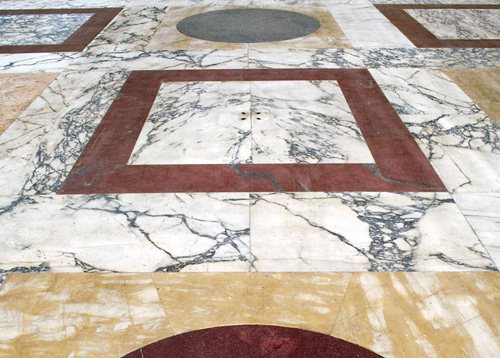
Basilica of Neptune Remains Of the Pantheon’s old neighbour, all that remains are an elaborate cornice and fluted columns against the Pantheon’s rear wall.
|